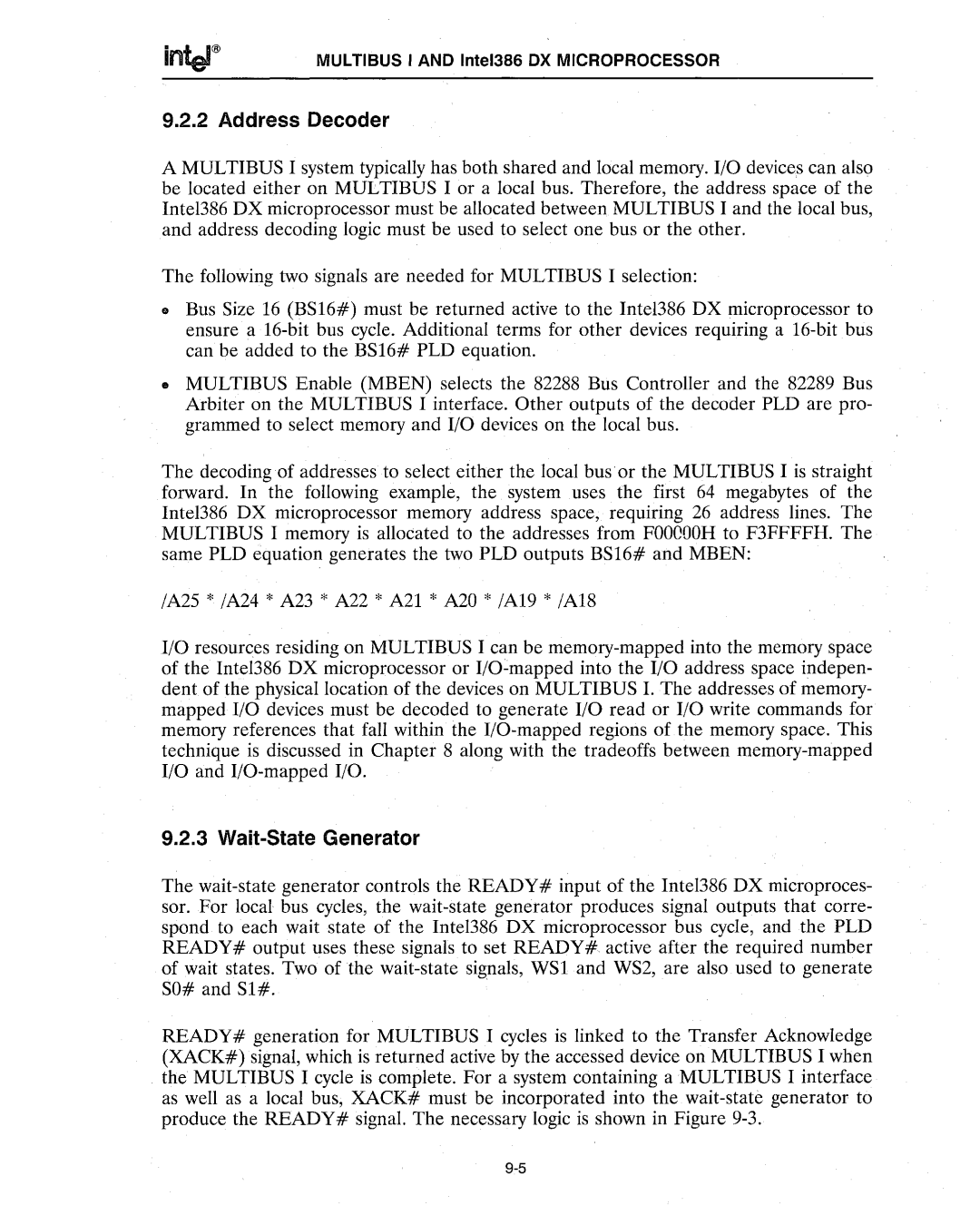
MULTIBUS I AND Intel386 DX MICROPROCESSOR
9.2.2 Address Decoder
A MULTIBUS I system typically has both shared and local memory. I/O devices can also be located either on MULTIBUS lora local bus. Therefore, the address space of the Inte1386 DX microprocessor must be allocated between MULTIBUS I and the local bus, and address decoding logic must be used to select one bus or the other.
The following two signals are needed for MULTIBUS I selection:
•Bus Size 16 (BS16#) must be returned active to the Intel386 DX microprocessor to ensure a
•MULTIBUS Enable (MBEN) selects the 82288 Bus Controller and the 82289 Bus Arbiter on the MULTIBUS I interface. Other outputs of the decoder PLD are pro- grammed to select memory and I/O devices on the local bus.
The decoding of addresses to select either the local bus or the MULTIBUS I is straight forward. In the following example, the system uses the first 64 megabytes of the Intel386 DX microprocessor memory address space, requiring 26 address lines. The MULTIBUS I memory is allocated to the addresses from FOOOOOH to F3FFFFH. The same PLD equation generates the two PLD outputs BS16# and MBEN:
/A25 * /A24 * A23 * A22 * A2l * A20 * /A19 * /A18
I/O resources residing on MULTIBUS I can be
9.2.3 Wait-State Generator
The
READY# generation for MULTIBUS I cycles is linked to the Transfer Acknowledge (XACK#) signal, which is returned active by the accessed device on MULTIBUS I when the MULTIBUS I cycle is complete. For a system containing a MULTIBUS I interface as well as a local bus, XACK# must be incorporated into the
